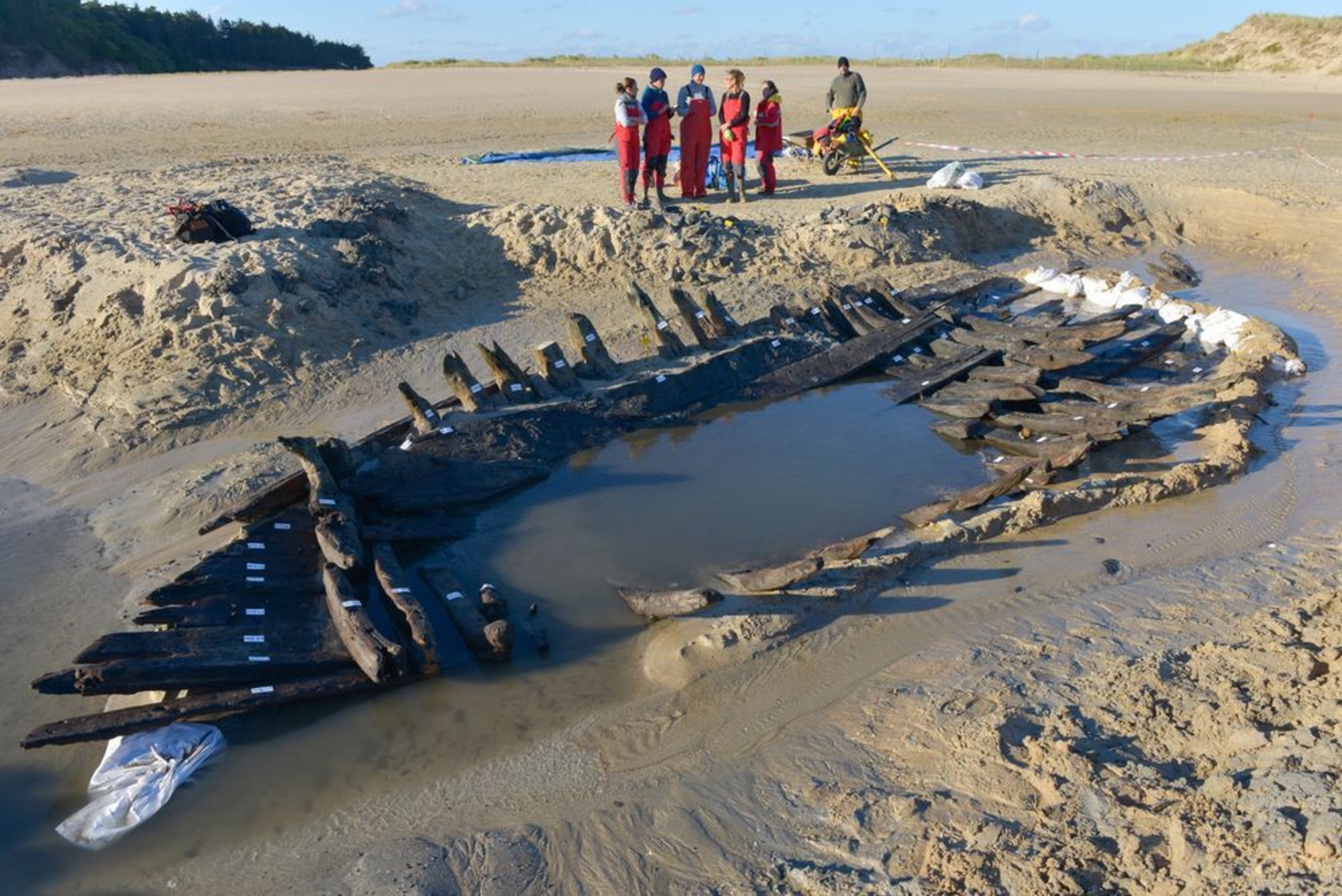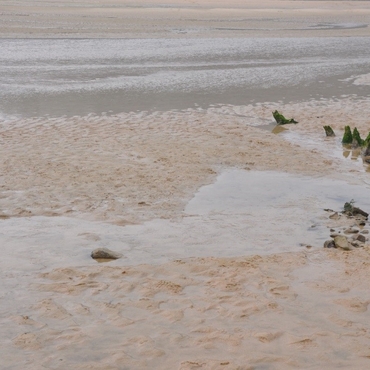
- Home
- Exploring the shoreline
- Foreshore sites
- Foreshore Wrecks
Studying wrecks that are alternately submerged and exposed to the air requires the development of special operational methods to cope with the constant back and forth of the tide.
Erquy Les Hôpitaux
In 2014 DRASSM thoroughly excavated the wreck designated ‘Erquy Les Hôpitaux’ twelve years after it was first discovered and surveyed. The purpose of the excavation was foremost to develop and experiment methods for studying wrecks situated in the intertidal zone. Bespoke surveying tools based on innovative technologies were tested on the wreck to assess their capacity for recording archaeological data during short tidal windows, and on remains which get reburied in the sand after every high tide.
In 2015 the team identified the various stages in the construction of the boat, a coaster measuring 9 m long and 3 m in the beam. It was hoped that this close look at the shipwrights’ working methods would provide some clues as to where the vessel had been built. The Erquy wreck was one of a huge number of small coastal vessels working in the region. Such vessels played an essential role in the maritime economy of the seventeenth century.
Sables d’or 3
In the autumn of 2015 a similar operation was undertaken near the Erquy excavation, less than 700 m away as the crow flies. Another wreck had recently emerged from the sand and was being continuously scoured by the waters of a nearby river. Close analysis of the wood revealed the presence of oak and elm, while certain features suggested the vessel had been built in the early eighteenth century.
Additional excavations were scheduled for October 2016 as part of the ongoing experiments on foreshore wrecks. The site was exposed in three days using the methods developed on the Erquy site. By draining the waters away from the excavations in the bed of the river Islet, the team were able to undertake the analysis of the wreck which was in an excellent state of preservation.





